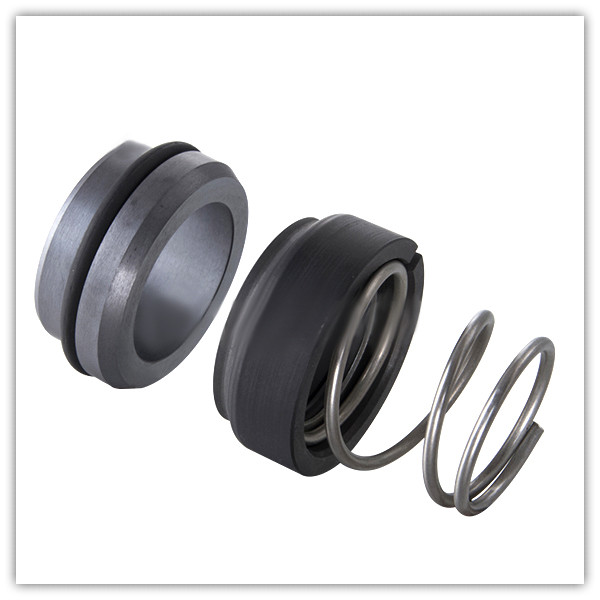
Mechanical seals are key sealing devices for fluid machinery, and their performance depends on the structural design of core components. The following analysis focuses on the structural forms of main components, revealing their functions and characteristics in the sealing system.

The rotating ring rotates synchronously with the shaft and is a key component for dynamic sealing. Common structural forms include flat-faced butt type, stepped type, and tapered face type. The flat-faced butt rotating ring has a smooth end face, forming a tightly fitting sealing surface with the stationary ring, which is suitable for medium and low pressure conditions, featuring low processing difficulty and good sealing stability. The stepped rotating ring enhances fluid disturbance through multi-stage step design to reduce end face wear, making it suitable for scenarios with particle-containing media. The tapered face rotating ring uses the self-tightening effect of the tapered surface to increase sealing pressure, and is widely used in high-pressure equipment. Rotating rings are mostly made of hard alloy or silicon carbide to ensure wear resistance and corrosion resistance.
The stationary ring is fixed on the equipment shell and forms a sealing pair with the rotating ring. Its structural forms include embedded type, gland-fixed type, and welded type. The embedded stationary ring is connected to the shell through grooves, featuring convenient installation and precise positioning, and is often used in small and medium-sized pumps. The gland-fixed stationary ring is directly pressed by gland bolts, and the wear amount can be compensated by adjusting the gland position, making it suitable for occasions with large operating condition fluctuations. The welded stationary ring is welded integrally with the shell, offering extremely strong sealing performance but high difficulty in disassembly and maintenance, and is mostly used in high-pressure vessels. Stationary rings are usually made of graphite or ceramics, which have both lubricity and sealing properties.
Elastic elements provide continuous compressive force for the rotating or stationary ring, with structural forms including spring type, bellows type, and diaphragm type. Spring-type elastic elements are divided into single-spring and multi-spring types: single-spring has a simple structure but uneven force distribution, while multi-spring is evenly distributed and suitable for high-speed rotation scenarios. Bellows-type elastic elements combine elastic function with auxiliary sealing to reduce leakage points, and perform stably in high-temperature environments. Diaphragm-type elastic elements provide elastic force through the deformation of metal sheets, with fast response speed, suitable for precision mechanical seals.
Auxiliary seals include O-rings, V-rings, and combined seals. O-rings have a simple structure and low cost, achieving sealing by virtue of rubber elasticity, and are suitable for low-pressure and normal-temperature conditions. V-rings are composed of multiple layers, forming multiple sealing barriers through axial compression, with excellent pressure resistance. Combined seals integrate the advantages of different materials (e.g., rubber-coated metal skeletons), featuring both elasticity and rigidity, and have higher reliability in complex working conditions. The material of auxiliary seals should be selected according to medium characteristics: for example, oil-resistant rubber is used in hydraulic systems, and fluororubber is used in corrosion-resistant environments.
The structural forms of these components cooperate with each other to form an efficient mechanical sealing system. Their design requires comprehensive selection based on factors such as equipment operating conditions and medium characteristics to achieve long-term stable sealing effects.